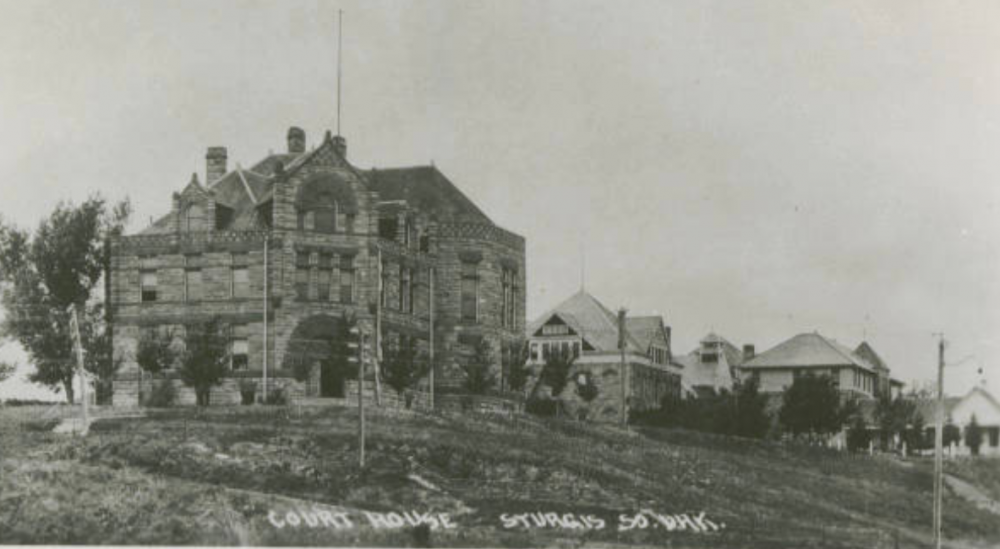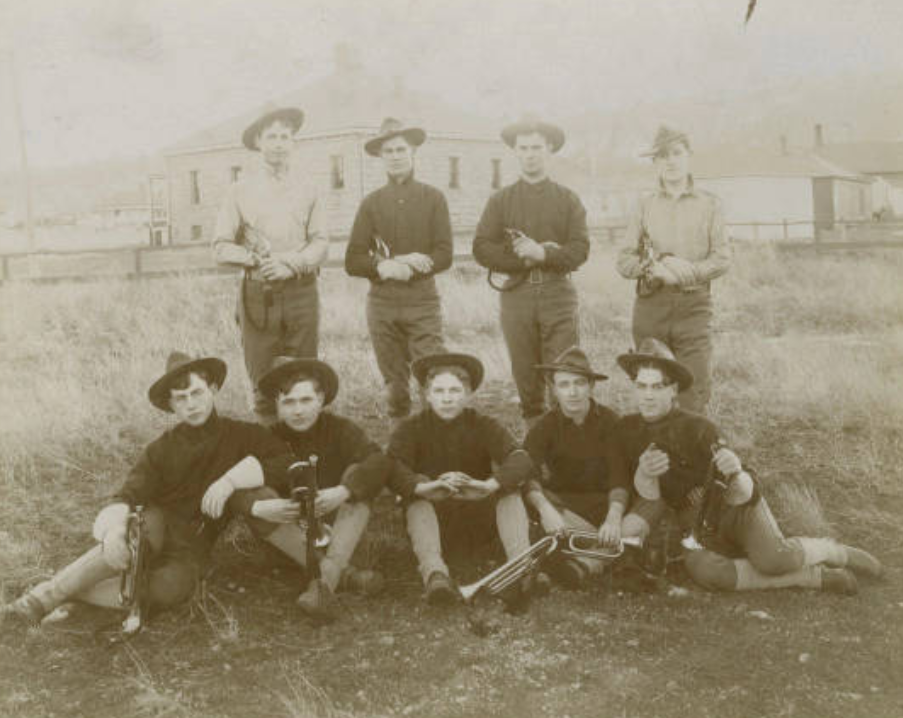During the Great Western Expansion, Fort Meade served as a United States Cavalry Post to nearly every cavalry regiment in the United States Army. The Star-Spangled Banner became part of the evening military retreat ceremony at Fort Meade in 1892, long before it became our National Anthem.

In 1938, J.C. “Pappy” Hoel hosted a dirt track race with nine riders that set a course in Sturgis history. Today, the Sturgis Motorcycle Rally has evolved into South Dakota’s largest tourism event and the world’s largest motorcycle rally. Sturgis and the Black Hills thunder with the sounds of motorcycle enthusiasts, numbering in the hundreds of thousands, from all over the world.
The history of Sturgis also must include the background of Bear Butte rising above the prairie just northeast of town. It is a geological wonder referred to as “Mato Paha”, or sleeping bear, by the Sioux Indians and is the origin of many Native American legends.
The culture and history of the Sturgis area is rich in heritage. Our past is greatly admired and respected as we move forward into our future.
Fort Meade
Ft. Meade was originally established in 1878 at as military post to protect miners and settlers traveling in the Black Hills area. It continued to serve as a military post until 1944 when it became part of the Veterans Administration Hospital network.
Today, Ft. Meade continues as part of the VA Health Care Network. VA Black Hills provides primary and secondary medical and surgical care, along with residential rehabilitation treatment program (RRTP) services, extended nursing home care and tertiary psychiatric inpatient care services, for veterans residing in South Dakota and portions of Nebraska, North Dakota, Wyoming and Montana. Ft. Meade works in conjunction with VA Hot Springs and community based outpatient rural outreach clinics. Ft Meade served over 13,000 patients, with over 21,000 patients cared for within the VA Black Hills system in FY2010. VA Black Hills employs 1120 people. VA Black Hills also supports Black Hills National Cemetery which is located off I-90 at Exit 34.
The Director for VA Black Hills is Stephen R. DiStasio, FACHE, CNA.
113 Comanche Rd. Ft. Meade SD 57741 605.347.2511 800.743.1070 www.blackhills.va.govFt. Meade continues to play an important role with our military. South Dakota National Guard and Army National Guard Candidate School now utilizes many of the buildings which once acted as barracks for soldiers in years past.
Ft. Meade Museum is located in the former commanding officers headquarters. It offers visitors an in-depth history of Ft. Meade. Still standing are many structures dating back as far as 1878, along with many other historic buildings including several of the stable building which were constructed of limestone. Located nearby is the historic Post Cemetery.
Interesting Facts
- Ft Meade was named in honor of General George Meade of Civil War fame.
- When originally established the military post was named Camp J.C. Sturgis and was further northeast. When relocated to its current location it was called Camp Ruhlen, named for the quartermaster in charge of building the fort.
- Comanche, a US Cavalry horse and sole cavalry survivor of the Battle of Little Big Horn, was brought following the battle and continued to live here for 9 years.
- The “Star Spangled Banner” was first used here for military ceremonies helping the drive to make it our national anthem
- During the Depression it was base for 16 Civilian Conservation Camps
- Several of the stone houses around the parade grounds were built by prisoners of war during World War II
